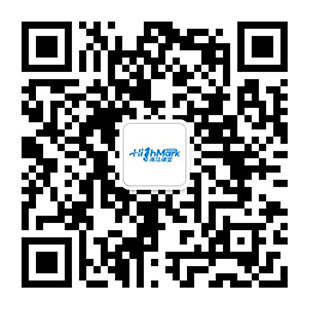备案号:辽ICP备19007957号-1
![]() 聆听您的声音:feedback@highmark.com.cn企业热线:400-778-8318
聆听您的声音:feedback@highmark.com.cn企业热线:400-778-8318
Copyright ©2015- 海马课堂网络科技(大连)有限公司办公地址:辽宁省大连市高新技术产业园区火炬路32A号创业大厦A座18层1801室
Report Title:
Generic Assessment on
Michelin’s Management and Change Processes
Table of Contents
Introduction 3
1. Key characteristics of Michelin. 4
2. Analyses on the circumstances surrounding Michelin - PESTEL analysis 5
3. Assessment on the change processes of Michelin’s management 7
4. Influential factors in the change processes–Force Field and Cultural Web analysis 10
5. Evaluation on Michelin’s management and leadership strategies 12
Conclusions 13
References 14
Introduction
Michelin group has been the technology leader of the global tyre industry. In the international market, famous Porsche, Audi, Citroen, Peugeot, general motors, Honda and other luxury car brands are loyal users of Michelin tires. In the fierce competition, Michelin always dominates with absolute power in the world in the field of tyre, "rolling" towards a business miracle. The structure of corporate governance and management is a very important issue throughout the operation of Michelin. On this issue, Michelin always has its own idea. Therefore, it is worthwhile to make assessment on Michelin from its cases of management and change processes, and this is exactly the focal point of the discussion in this report.
In this report article, the assessment for Michelin will be carried out as below: first of all, the generic view on Key characteristics of Michelin will be given. Next, analyses on the circumstances surrounding Michelin will be conducted with PESTEL analysis to define the corporate environment. Subsequently, assessment will be conducted on the change processes of Michelin’s management and further provides some influential factors in the change processes of Michelin with the support from Force Field analysis and Culture Web analysis (Decker, 2014). Finally, evaluation on Michelin’s management and leadership strategies will be carried out.
1. Key characteristics of Michelin
As an international giant in tier market, Michelin has applied various change processes when running Shanghai factory and features itself with several characteristics as below.
Michelin group endeavors to realize the joint cooperation and China tire giants in terms of technology, resources, capital and other dimensions to get into a “Chinese business road”. This means Michelin seizes the opportunity to localize and split the Chinese market and to occupy China's tire market with effective integration of resources, achieving strong combination and complementary advantages. In addition, Michelin places emphasis on the science and technology innovation. That means Michelin utilizes advanced science and technology to improve its products and brand, to become modern enterprise and to constantly improve the development of the corporate. Moreover, Michelin tends to adapt to China's industrial environment and economic circumstances and create a Chinese-style path for development in its business management and marketing. In the construction of marketing models and sales channels Michelin implements initiatively to conduct changes process to adaption. Finally for the human resources management, after the change in leading processes, Michelin obeys the rule that the corporate should act as employees’ personal trainer. Human Resources Department of Michelin guarantees that every 300 white-collar workers or every 500 blue collar employees are provided with a full-time career manager. Whenever the employees need, their career managers will timely conduct communication to solve the problems in the career.
2. Analyses on the circumstances surrounding Michelin - PESTEL analysis
Michelin’s Shanghai factory is located in Shanghai, China, which is an extremely desirable market for the tiers sales. The related environment can be analyzed with the approach of PESTEL analysis as below (Shilei, 2009),.
Political factor: Chinese market is transforming from "planned economy" to "socialist market economy", though its government is sometimes obsessed with power and local protection and even changes the rules of the market game. As for Shanghai, it is a relatively open city with advanced political regulations and environment and the market regulation is suitable for competitive corporates, just like Michelin.
Economic factors: China represents the top GDP in the world and incredible financial power. The economic structure, economic development level and future economic trends are all attractive. Especially in China, the economic is developing in a high but steady speed, which is remarkable. As for Shanghai that opens up as a leader, acts as one of the China's international economic, financial and trade center. Nowadays, facing the extremely complex domestic and international economic environment background, Shanghai's economy continues to maintain steady growth of the medium speed and shows two characteristics that one is its prior to national economic growth rebound trend while the second is its increase in domestic compared to other area is relatively stable. This reflects the effectiveness of structural adjustment the quality of economic growth in Shanghai has also been improved. Michelin will face great opportunity in this prosperous area.
Social factors: China has got closer to free trade and enhanced the educational level in the past decades. Shanghai is the pioneer of China to accept the foreign corporates and owns an open atmosphere in society, making it available for the operation of Michelin. In detail, Michelin’s sales decline in Asia market these years, with a sharp decline in the third quarter. But in the Chinese market in the summer, it reversed the situation and the demand remained stable, while the car dealer inventory got increased. In the context of the social and economic downturn, the company's in other Asian markets continue to shrink. Asian car and light truck tire replacement tire overall demand keeps growing, and the Chinese market is still steady. In other markets, under the impact of the decline in exports, the competition is fierce.
Technology factors: China owns top manufacture technology that is well known globally for lower costs and high-quality products, which is extremely desirable for the manufacturers like Michelin. The rapidly developing tech in Shanghai is also a great part of potential that might benefit Michelin.
Environmental factor (Ecological): Either the whole China or Shanghai has a vast territory and various kinds of resources with millions of people. They are indeed suitable for exploiting the new tier product markets to certain extent.
Legal factors: Shanghai is speeding up to build the complete laws as its laws are not satisfying now. That means Michelin may come across unfairness when operating.
From PESTLE analysis, it can be learnt that Shanghai may be a great position for Michelin’s production and it may be compatible with the change process of Michelin. Meanwhile, integrated management is needed and it is full of challenge in such developed region.
3. Assessment on the change processes of Michelin’s management
From the case it can be seen that Michelin is mainly facing the management and human resource problems in Shanghai factory. Due to the problems above, Michelin exert continuous change process to bring better management. Generally speaking, the team management system tends to attach more importance on its employee, which means Michelin’s Shanghai factory has transformed from a task-oriented workplace to an employee-caring and humanized corporate (Camacho-Miñano, 2013). In all, this is absolutely appreciated changing trend, which may greatly improve the soft power of Michelin. To illustrate the management and change process of Michelin further, a closer look at the changes of Michelin’s management is needed. From the basic point, it should be noted that the so-called economic point of view that people do works mainly to meet the needs of the economy just like to earn money to feed their families. But more people are more than just economic or social. The so-called social view, mainly discuss that people may shoulder the responsibility in addition to meet the economic needs. They also need to meet their social needs, such as the need for interpersonal communication and communication, the pursuit of friendship, love, belonging, and so on. From economic focused to society focused, it contributes a lot when it comes to the management and leading ways of Michelin Shanghai factory.
In detail, Michelin’s change processes in operating management are well implemented in some following steps. First of all, it chooses the personnel with no tire industry sales experience to train. Michelin has a strong training system of new employees and get those freshmen training in its corporate culture is being regarded as the most important to prevent new employees from breaking the previous enterprise culture. Next, it place arrangements for 2 to 3 agents to take in charge of a certain regional. Michelin to a region are respectively assigned more than two people while some of his subordinates dealers and customers multiple regional is assigned 3 to 4 people to take in charge that belong to the higher status of management. This is important as it sets mutual restraint between each other to avoid the single person taking in charge of the whole and even directing to corruption. In addition, Michelin places management in the end point and promote the participation and cooperation of business among the employees. Specific requirement is that the sales staff must be responsible for the end customers and also help and train the dealers to expand the customers. What’s more, Michelin requires the dealers to press goods and to obtain stable cash flow of the company to maintain leading position with obvious advantages of Michelin tires in the industry. Finally, the research and development investment of the company is huge and Michelin has a strong bargaining power and nearly half of the patents among the whole industry. Michelin group will spare no effort in accordance with the area of the market and the road to design specific targeted tires in every place.
In terms of human resource management, Michelin also performs excellent work. Michelin applies MDP to manage first and later improve the management system to the form of PSMT (Plant Senior Management Team) and BUL (Business Unit Leader). With the new management system, Michelin profoundly enhance the extent of participation and initiative of employees. Generally speaking, it changes the leading ways by making initial changes such as building on the foundation, caring for frontline workers and enhancing technology and equipment, expanding the leadership team with the Plant Senior Management Teams such as refining human resources practices, training frontline leaders, sharpening the team’s skills of PSMT, increasing confidence and communication, refining human resources practices and empowering the team. The processes are appreciated including finding the appropriate staff to participate in company's culture from the beginning of recruitment, applying less direct management to allow more employees to participate in, giving the hired employees full degree of trust to make those employees more excited and effective to go to work, setting open office and the mutual visible role of participation to help employees promote interaction, providing more learning opportunities and available employee participation to make the employees constantly feel their growth and progress as well as being more involved, creating a collaborative environment conducive to the participation of employees and improving the transparency to promote participation and the communication with the teams and maintain information transparency, which means if things go wrong, the staff will be informed where the problem is and how the problem can be solved. All those are efficient when participation and initiative of employees are needed. Besides, from the result of the change processes, it can be viewed as excellent to confirm the employees and achieve higher grades of Michelin.
4. Influential factors in the change processes – Force Field and Cultural Web analysis
It is necessary to figure out how Michelin finds it essential to conduct changes in the corporate management and the human resource management when trying to give effective evaluation. Influential factors in the change processes are to be found with force field and cultural web analysis (Swanson, 2014; Tingru, 2015)
According to force field analysis, everything is under a pair of opposing forces and initially in a state of equilibrium. The power to promote the transformation of things is the driving force and the power to maintain the original force is the constraint force in a dynamic system, which is also in the dynamic balance of two forces. In order to change, the driving force must be beyond the control force to break the balance. For Michelin, the previous leading system is the dynamic system and it is basically in the balance. The influential factors can be divided into the driving force and the constraint force while the driving force can be divided more concretely into factors inside and outside Michelin and the constraint force can be divided into resistance from individuals and the group. The factors are listed as followed.
External environmental driving forces: changes in the macroeconomic environment of the whole society including policies and natural environment; the influence of scientific and technological progress; the impact of resource changes; changes in competition and the relevant industries.
Internal environmental driving forces: requirements for timely adjustment of organizational structure; requirements for ensuring the smooth flow of information; requirements for overcoming the low efficiency of the Michelin; requirements for quick and efficient decision making; requirements for improving the overall management level of the Michelin
Resistance from individuals: the impact of interest including salaries and the promotion of one’s position; the impact of attitudes including the employees’ participation and initiative; psychological impact including the employees’ satisfaction; other personal factors such as personal marriage or family situations.
Resistance from group: the influence of the change of Michelin’s structure and culture; the influence of interpersonal adjustment; the group pressure and constraint.
Meanwhile, corporate culture can have a huge impact on the working environment and productivity of an organization. This is why the cultural web analysis should be done to find out what makes an effective corporate culture. Culture formed in web tends to become the focus of people's attention during the period of Michelin’s change when it is looking for transformation and facing cultural conflicts. In detail, when Michelin is searching for growth and other fast developing strategic, it can be implied that the existing Michelin’s culture becomes inappropriate and hinders progress rather than support it. In a relatively static environment such as daily operation, cultural issues may be responsible for the low morale, absenteeism and high turnover rate among the staff and all these negative effects may exert constraint on productivity. Six elements of Michelin’s cultural factor for the change processes are listed as below.
Rituals and routines, that the daily behavior of the staff in Michelin and the signals of human action to accept this determines what is expected to happen in the processes; Organizational and the power structure, that includes the structure of the organization and is defined by the structure, power and influence to show the contribution of employees and when the structure goes against the majority of the staff, it brings changes; control systems, that is related to the approaches used for the organization of control, which include the financial, quality and incentives system and if the control is not effective as Michelin expects, changes will take place.
5. Evaluation on Michelin’s management and leadership strategies
It can be concluded that Michelin’s management and leadership strategies are effective from the achievement due to its management and change processes.
After certain times of reformations, Michelin's long-term strategy and target in Shanghai, China tend to focus mainly on innovation and growth. In the process of the realization of the strategy and objectives, Michelin correctly place the human factor as the key point. Michelin's human resources department delivers to its own with an important position that Michelin’s employees are the strategic partners of its business sectors and every employee should get involve into Michelin's operation and progresses. That can be illustrated in another way that human resources department is not simply a simple, passive and service department, but also an active and positive role for the business sectors to provide individual support and participation and further contribute to individual’s development. All in all, this kind of leadership management applied by Michelin is efficient and relatively perfectly suitable for itself.
Conclusion
In conclusion, Michelin’s team and leadership management system and human resources department can be defined as compatible, valuable and efficient for Michelin compared to other corporates (Malloch, 2014). Through the change processes, Michelin has developed the team and leadership management system that effectively promotes the dynamic of its employees and the human resources system that exert positive effect on disposing the conflict around employees and the work environment.
For the similar corporate, it is necessary to take a lesson from Michelin and stress the employee-caring and humanized style corporate. With inevitable conflicts throughout the operation, the corporate is required to take those change processes for its continuous cooperation, mutual trust and solid partnership with its employees, which are all needed for a corporate itself to achieve a real win-win and the value maximization.
Reference
Camacho-Miñano, M, Moyano-Fuentes, J, & Sacristán-Díaz, M (2013), 'What can we learn from the evolution of research on lean management assessment?', International Journal Of Production Research, 51, 4, pp. 1098-1116
Decker, P, Durand, R, Ayadi, F, Whittington, W, & Kirkman, D (2014), 'Self-assessment of management competencies and intention to change', Academy Of Educational Leadership Journal, 4, p. 129
Malloch, T, & Theodore Roosevelt (2014), 'Michelin: Catholicism, corporate leadership, and meeting the challenges of the 21st century', Practical Wisdom in Management: Business Across Spiritual Traditions p. 22 UK: Greenleaf Publishing Limited Sustainable Organization Library (SOL)
Shilei, L, & Yong, W (2009), 'Target-oriented obstacle analysis by PESTEL modeling of energy efficiency retrofit for existing residential buildings in China's northern heating region', Energy Policy, 37, China Energy Efficiency, pp. 2098-2101
Swanson, D, & Creed, A (2014), 'Sharpening the Focus of Force Field Analysis', Journal of Change Management, 14, 1, pp. 28-47
Tingru, C, Xinwei, W, & Hock-Hai, T (2015), 'Building a Culturally-Competent Web Site: A Cross-Cultural Analysis of Web Site Structure', Journal Of Global Information Management, 23, 4, pp. 1-25

 24h在线客服
24h在线客服







备案号:辽ICP备19007957号-1
![]() 聆听您的声音:feedback@highmark.com.cn企业热线:400-778-8318
聆听您的声音:feedback@highmark.com.cn企业热线:400-778-8318
Copyright ©2015- 海马课堂网络科技(大连)有限公司办公地址:辽宁省大连市高新技术产业园区火炬路32A号创业大厦A座18层1801室
hmkt088